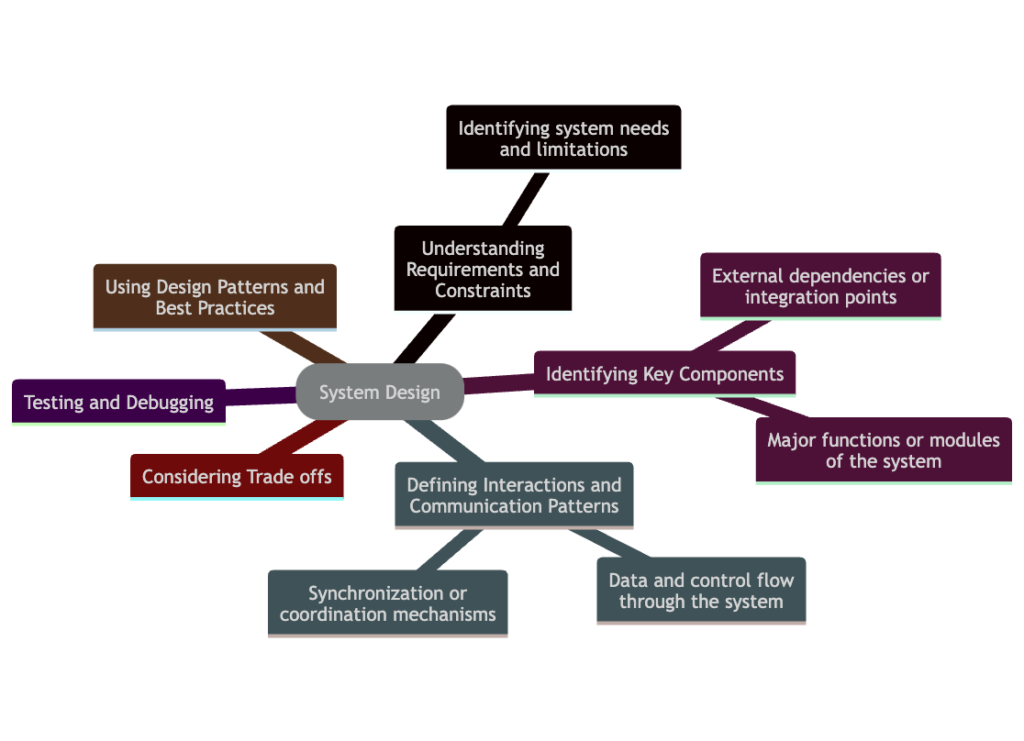As a software engineer, you know that designing software systems can be challenging. Understanding the fundamentals of system design is crucial for creating scalable, maintainable, and robust software systems. In this blog post, we’ll cover the key concepts and best practices of system design that every software engineer should know.
Section 1: Understanding Requirements and Constraints
The first step in system design is understanding the requirements and constraints of the system. This includes identifying what the system needs to do and the limitations it has. Examples of constraints include performance, scalability, security, and maintainability. To get started, ask yourself these questions:
- What problem does the system need to solve?
- What is the expected usage volume of the system?
- What level of security is required for the system?
- How easy should it be to maintain the system?
Section 2: Identifying Key Components
Once the requirements and constraints are clear, the next step is to identify the key components of the system. This includes identifying the major functions or modules that the system will need to perform, as well as any external dependencies or integration points that may be required. Examples of components include:
- User interface
- Database
- Web services
- Authentication and authorization
- Analytics and Reporting
Section 3: Defining Interactions and Communication Patterns
The next step is to define the interactions and communication patterns between the key components of the system. This involves understanding how data and control flow through the system, as well as any synchronization or coordination mechanisms that may be needed. Examples of communication patterns include:
- Request/response
- Publish/subscribe
- Event-driven
- Batch processing
Section 4: Using Design Patterns and Best Practices
Design patterns and best practices are proven solutions to common design problems that can help ensure the system is scalable, maintainable, and robust. Examples of design patterns include:
- Model-View-Controller (MVC)
- Observer pattern
- Singleton pattern
- Dependency Injection pattern
Section 5: Considering Trade-offs
It is essential to consider the trade-offs between different design decisions. For example, a highly scalable system may require sacrificing some level of simplicity or ease of maintenance. Similarly, a highly secure system may require sacrificing some level of performance or usability. Examples of trade-offs include:
- Scalability vs. simplicity
- Security vs. performance
- Usability vs. maintainability
Section 6: Testing and Debugging
Testing and debugging are critical components of system design. Ensuring that the system is thoroughly tested and debugged can help identify and address any issues before they become major problems. Examples of testing and debugging techniques include:
- Unit testing
- Integration testing
- Performance testing
- Debugging tools
Conclusion

In conclusion, mastering the fundamentals of system design is crucial for creating scalable, maintainable, and robust software systems. By understanding the requirements and constraints, identifying key components, defining interactions and communication patterns, using design patterns and best practices, considering trade-offs, and thoroughly testing and debugging the system, software engineers can create software systems that meet the needs of their users. With these principles in mind, you can continue to hone your system design skills and create innovative solutions to complex problems.
